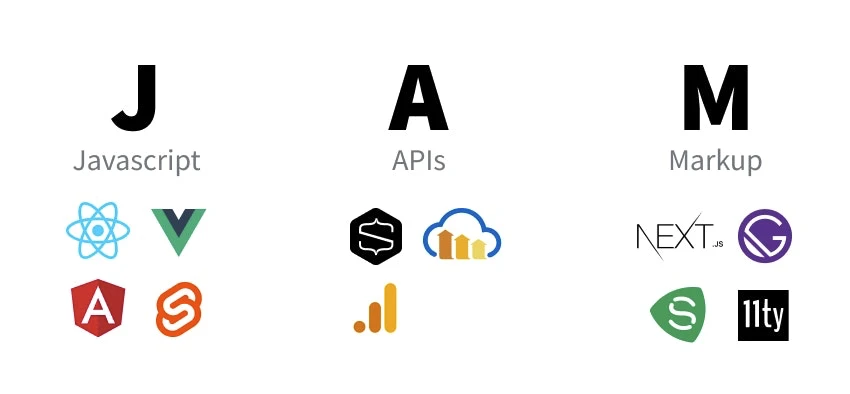
What is Jamstack?
This article covers Jamstack, a modern web development method that improves website performance, security, and reduces hosting costs using pre-built components, JavaScript and APIs. It highlights the benefits of Jamstack such as improved performance, increased security, scalability and cost-effectiveness, and explains the advantages of its modular development approach.
Jamstack is a modern web development architecture that utilizes pre-built, reusable components and a set of client-side JavaScript technologies to create fast and secure websites and web apps. It is a combination of three main components: JavaScript, APIs, and Markup.
JavaScript: The frontend of a Jamstack app is built using JavaScript frameworks and libraries such as React, Vue.js, or Angular. These frameworks allow developers to build dynamic and interactive user interfaces.
APIs: The backend of a Jamstack app is powered by APIs. These can be custom-built or third-party services such as Firebase, AWS Lambda, or Contentful. These APIs handle tasks such as authentication, data storage, and server-side logic.
Markup: The markup is generated at build time, rather than on the fly, by a static site generator such as Gatsby, Next.js, or Jekyll. This results in faster load times and improved security, as there is no need for server-side rendering or database queries.
Benefits of Jamstack include:
Improved performance: Since the markup is pre-built and served from a CDN, the site loads faster for the user.
Security: Since there is no need for server-side rendering or database queries, the risk of data breaches is greatly reduced.
Scalability: Since the frontend and backend are decoupled, the site can easily scale horizontally by adding more servers or vertically by adding more resources to existing servers.
Cost-effective: Since the site is pre-built and served from a CDN, the hosting costs are significantly lower than traditional server-side rendered sites.
Development experience: The Jamstack architecture allows for a more modular development experience, with reusable components and a focus on building small, single-purpose APIs.
To implement Jamstack, a developer needs to choose a static site generator, a JavaScript framework, and an API service. Then, they can start building their site or application by creating reusable components and connecting them to the API. Once the development is done, the site can be deployed to a CDN for fast and secure delivery to users.

